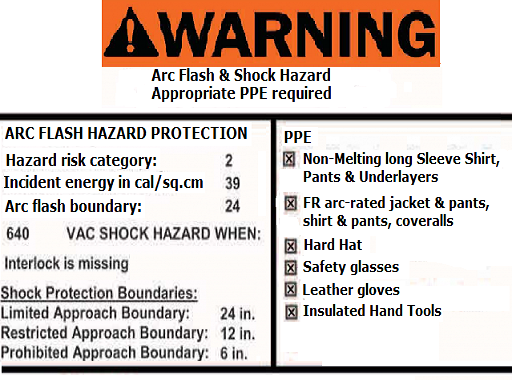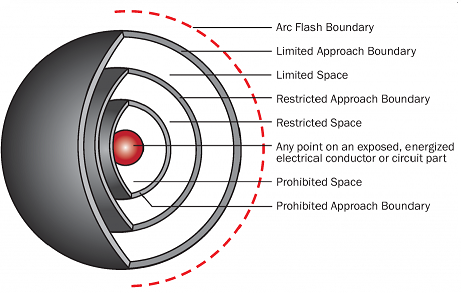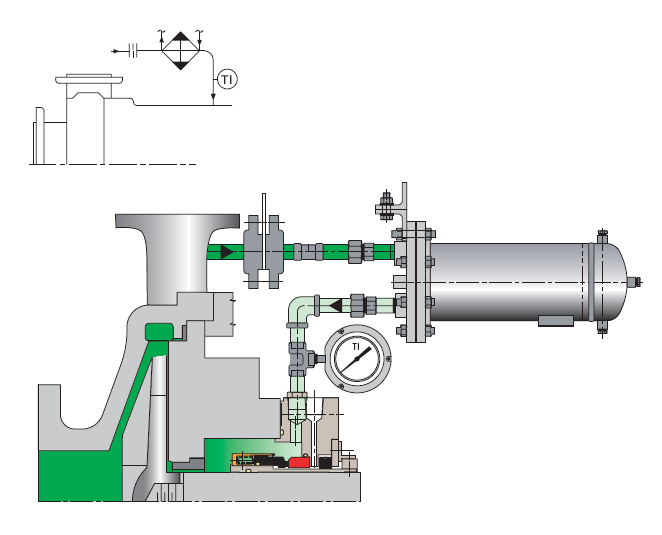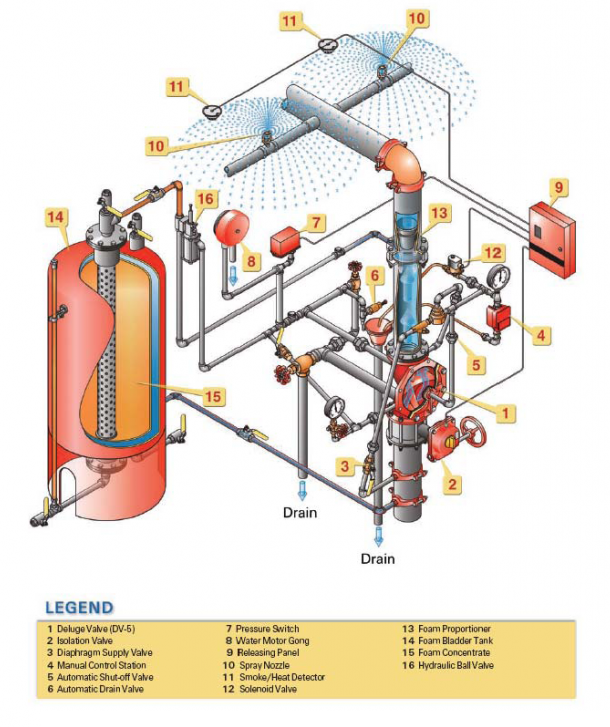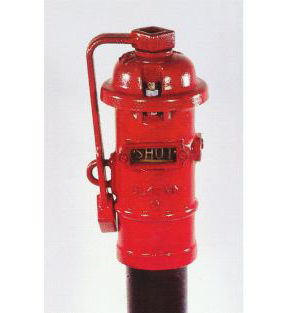Arc flash description
An arc flash is a violent (it can occur in as little as 1/1000 of a second), explosive discharge of electrical energy that usually originates from a short circuit fault. Metal vaporized by the 5,000 degrees Celsius temperatures developed by arc flash produces a high temperature plasma. Shock wave resulting from the blast bursts unvaporized metal at extreme high velocities. This metal at traveling at high velocity most often leads to fatalities. Arc flash phenomenon is discussed in more detail at NFPA 70E standard.
Protection against arc flash
Protection against arc flash is possible by using techniques such as remote breaker racking, remote door openers/closers as well as wearing protective personnel equipment (PPE). A basic element is the use of protective labels and signs, providing necessary warnings about arc flash and information about safety precautions and requirements.
Typical arc flash warning sign
Basic definitions
The following terms are often found on arc flash labels.
Arc Flash Boundary
This is the distance from an arc source within which a person could receive a second degree burn in case an arc flash occurs. All parts of the body inside the Arc Flash Boundary shall be properly protected.
Limited Approach Boundary
This is the distance from an exposed energized electrical conductor or electrical circuit components-parts. The distances for a Limited Approach Boundary change according to the voltage applied, in accordance with NFPA 70E.An Energized Electrical Work Permit (EEWP) or a LOTO (Lock Out Tag Out) Permit is required before any person enters the Limited Approach Boundary.
Restricted Approach Boundary
This is the distance from an exposed energized electrical conductor or circuit within which there is a high risk of shock.
Prohibited Approach Boundary
This is the distance from an exposed energized electrical conductor or circuit part within which work is considered to be equivalent to making contact with the electrical conductor or circuit part.
Incident energy
The amount of energy generated during an arc flash event at a certain distance from the source. One of the units used to measure incident energy is calories per centimeter squared (cal/cm2). Flame resistant clothing and other Personal Protective Equipment (PPE) shall be used based on the incident energy exposure linked with the specific task and Hazard/Risk category numbers ranging from 0 to 4. As we get closer to the area of arc flash, additional PPE has to be used, since incident energy value increases as the distance from the arc flash decreases.
